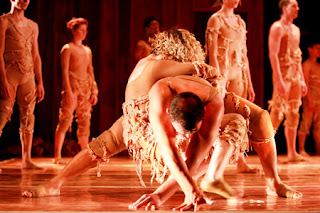dissect·
1. To cut apart or separate. -> GAME
2. to cut open and examine the structure of a dead animal ->PLOT
------------------------------------------------------------------------
Description
Paucartambo and One-Act play.
This week (on Tuesday and Thursday) we started staying after school to plan our one act play.
Although Roberto said that the first day wasn't successful, I think it was, as the stimuli (of a morgue) appeared, and we read two different plays ('Over the wall' and 'Us and them').
On Thursday, (although it wasn't easy) an idea for a possible game appeared, inspired by the concept of "gender bender" and "Two face".
We started exploring the possibilities and limits that the game can give us, and the possible characters for our story.
In class, we've been studying how the four conditions for Theatre are applied in Paucartambo.
Analysis and Connections
So...What did I learn on Tuesday + Thursday?
As we already know, the creation of a play is a long process, and not at all an easy process, it takes a LOT of creativity, time, knowledge about theatre and different plays.
(From the two plays we read) I learnt that short sentences and dialogues work perfectly if you want to create an entertaining and dynamic scene. (I hope I can apply the technique of short dialogues and counter point when creating my scene for the One-act play).
*When creating a play, you need to create characters who "lack something", or are 'looking' for something.
*A game will always give you a lot of possibilities, but also a lot of limits (like the communication between different characters in our play).
As I mentioned in one of my past entries, the Activation Theory is a great contributor in the creation of a play, and we need to make sure that our One-act play has variation (dynamic scenes and varied characters), uncertainty (what happened to mr. Robertson/McRobbie? and what do they want from him?), novelty and complexity (innovative and complex GAME).
We need to create 'elaborated jokes' such as some in "Más Pequeños que el Guggengeim", and focus on characterization, as it will be the most important aspect in our One-Act play.
*In the play "Yerma- mujer que no se habita"- there were two male characters, represented by only one actor who changed (vaguely) parts of the costume and hairstyle. The characterization of both characters was so different, that you could easily and clearly differentiate them.
This is what we need to achieve. A clear and easy differentiation of the two characters that each actor is going to represent.
Now that we have a game and a plot, what 'steps' should we take to create a successful and comic play?
What exercises can we find to reach great characterization?
Are the steps for creating a play, script, or character always the same?
How is the varied characterization reached in Paucartambo? and which could be a good research topic about this tradition?

